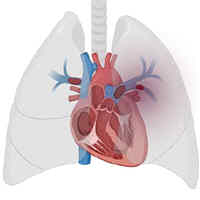Management of Pulmonary Embolism in the ICU
healthmanagement.org
Pulmonary embolism is a reason for admission to the Intensive Care Unit and this complication in hospitalised patients is associated with high morbidity and mortality. The identification and management of pulmonary embolism is a challenge for doctors.
Pulmonary Embolism (PE) is the third cardiovascular cause of death since its clinical expressions in critical patients may go unnoticed or present themselves as sudden respiratory arrest or failure, which could lead to death.
The approach in the ICU is focused on timely identification, hemodynamic and respiratory support, and reperfusion therapy, either with thrombolysis or thrombectomy (Essien et al. 2019).
PE affects 900,000 people per year in United States and Europe, out of which 100,000 die (Torres and Haut 2020).
Its incidence has a range of 70 to 183 per 100,000 people per year (Essien et al. 2019; Ashrani and Heit 2008; Spencer et al. 2006).
From 10 to 30% of these patients die within 30 days and 25% are expressed as sudden death (White 2003).


















